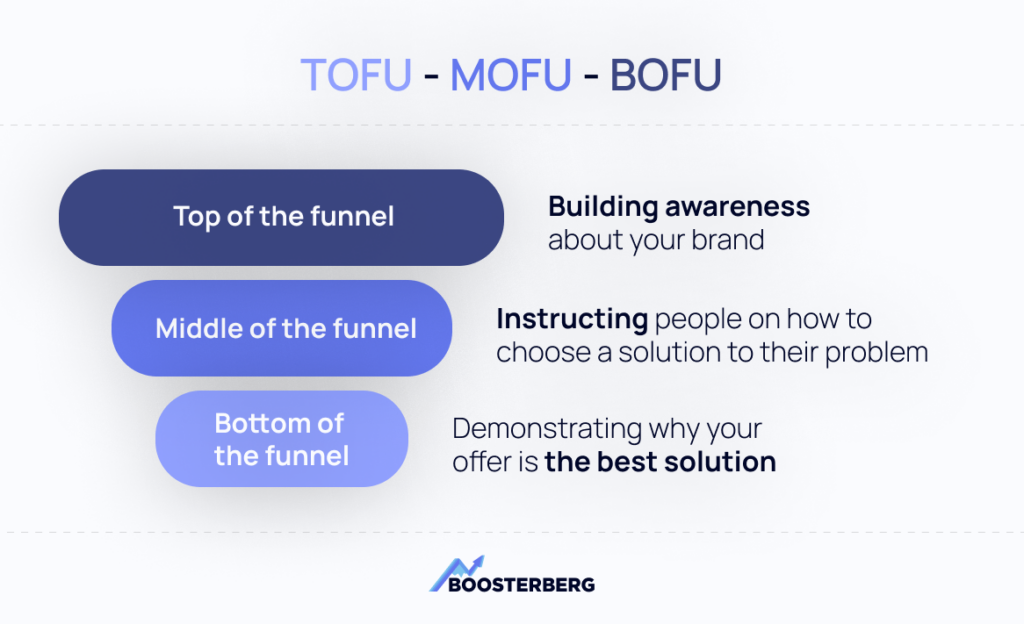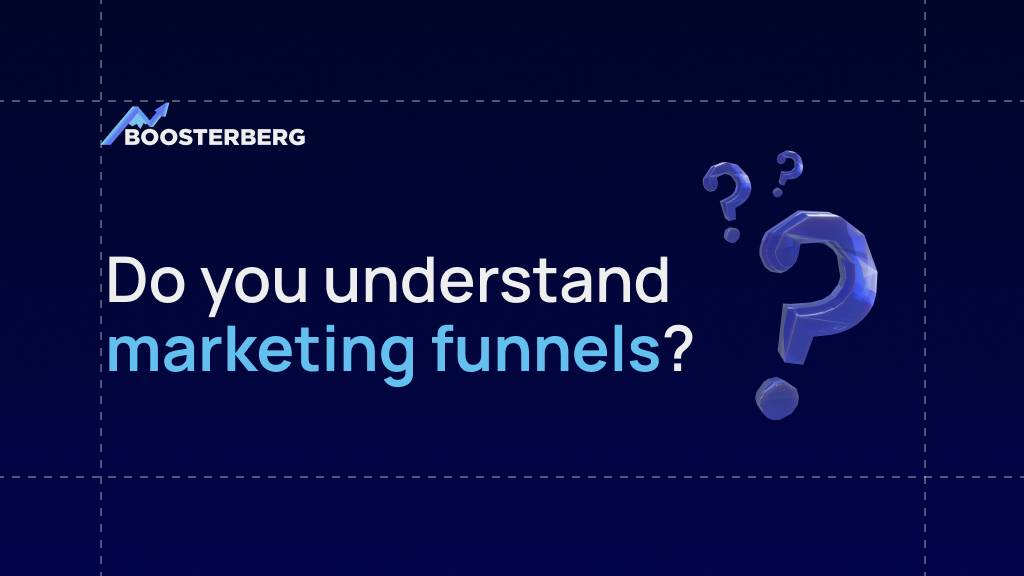In today’s article, we will familiarize ourselves with one of the most used marketing terms—marketing funnels.
Imagine your marketing as a huge fishing net—it can catch a lot of fish when cast. But when you’re pulling the fishing net out of the water, some of the fish might slip out.
You must carefully pull the net out to keep as much of your catch as possible. In marketing terms, you need to identify the steps necessary to keep as many potential customers interested as possible. This includes leading them back to your boat and taking them home with you. In marketing-speak—converting them.

The more often you go through this process, the better you will get at it. Analyzing your steps will enable you to make better decisions in the future. You can then repeat the steps that will ensure you get enough customers in your boat. Finally, you will have enough data to create a working marketing funnel.
So let’s dive into it and learn more about fishing nets…we mean marketing funnels.
What is a marketing funnel?
A marketing funnel is a visual representation of your customer’s journey. A customer takes a series of steps from first noticing and getting to know your brand to the last stage when they make a purchase, create an account, or subscribe to your newsletter—in other words, when they convert.
Usually, the seller carefully designs a marketing funnel to convert more potential customers into paying customers. But if your customers are converting and you’ve never even heard of a marketing funnel, you already have one. You just have to identify it. This will allow you to adjust it and use it to gain more customers.
The most common marketing funnel consists of four steps, and it’s called the AIDA model. Let’s have a look at how it works.

The AIDA model
In 1898, an American businessman called Elias St. Elmo Lewis wanted to improve his sales process. As an experienced marketer, he was convinced that advertising should be seen as training that helps the recipient solve a problem. He created the AIDA model to optimize the interaction between a seller and a buyer and how they discuss the product/service in question.
How does it work?
The AIDA model is a series of steps or stages customers go through when making a purchasing decision, specifically: awareness, interest, desire, and action.
Let’s look at each stage in more detail and see how they apply to digital marketing.
Awareness
To buy the product, the customer needs to know about it first. So this is the beginning of your fishing trip—casting that fishing net and raising awareness of your product/brand/service. Building awareness usually starts with advertising, but in today’s day and age, it could also start with a simple social media post. Whatever helps you reach your potential customers raises the awareness of your brand.
You could have the highest-quality product in the world. You could provide the most helpful, effective service anyone could ask for. But if people don’t know about it, what good is it? And, as you will see in the next step, it’s not enough to reach people; you also have to reach the right kind of people.
Example:
You could use any kind of advertisement, really. There are plenty of options in digital marketing – social media posts, paid Google ads, or Youtube ads.
Interest
Once you catch the customer’s attention, you need to find a way to keep them interested. To do that, you have to find their soft spot. What is your potential customer looking for, and what problems are they trying to solve? For example, are they looking for a new pair of headphones because their current ones keep falling out of their ears when they run? How are you going to show them your headphones are better?
Example:
A video explaining the product or service, a product description on your website, product photos, service walkthrough.
Desire
Once you’ve identified their pain points, you have to show them that your offer is precisely what they need. At this stage, the customer should develop a need for your product, moving from just being interested to actually wanting it.
Example: Using our headphones example – a video review of your product by an expert or an influencer in the given niche.
Action
Lastly, it’s all about the customer getting what they want. At this stage, they decide how they will interact with what you’re offering. Depending on your offer, they could be:
- Downloading a trial version of your product
- Subscribing to your newsletter
- Creating an account on your website
- Actually making a purchase using the cart and checkout on your website
The action stage differs based on industry and customer type—you might expect the customer to buy something at the end of your funnel, or you might want them to fill out a form. When a customer does what you want them to do, it’s called a conversion.
Conversion is the goal of every marketing campaign, so a funnel is a set of steps that lead to it. For example, you might get many people at the top of your funnel, but you also might lose some prospects further down the funnel. Only the most interested customers will take that last step and convert.

Marketing funnel stages: TOFU, MOFU, BOFU
Each marketing funnel consists of three parts – TOFU (Top of the Funnel), MOFU (Middle of the Funnel), and BOFU (Bottom of the Funnel). These acronyms might sound funny, but they’re easy to remember and critical to your marketing activities. So let’s look at what happens at these funnel parts and how to make the most of it.
TOFU – I have a problem. How do I solve it?
Imagine you’re looking for a new pair of headphones. You’ll probably do a basic Google search and discover some of the most popular brands. This part represents the TOFU stage for each of those brands. This means that you have a need, know what you’re looking for, and are actively searching for it.
Brands must ensure they appear in those search results to be found at this stage. How? There are plenty of options, but in this case, if the user is searching for a pair of headphones suitable for running, an article explaining how your headphones have the right fit, they’re sweat resistant, and they don’t slip out of the ear, will get you closer to them.
Writing relevant content is just one of the strategies you can apply to the TOFU stages. In addition to writing relevant articles, you should also be visible on social media and invest in paid advertising to increase your chances of being noticed by potential customers. Native ads and display ads are especially effective in this case. And considering we’re trying to provoke an interest in the user, video has proven to be one of the most effective types of content for increasing engagement on social media.
MOFU – Which of these should I choose?
Thanks to your research in the TOFU stage, you now know that you want headphones and have a couple of options/brands to choose from. So in this phase, you’re choosing between a couple of options.
Brands need to anticipate and answer their potential customer’s questions about their product at this stage. If they find the required information on your website or social media accounts, they’re more likely to buy the product from you. To help them, you can offer relevant content such as video or written testimonials, video demonstrations of your product, or e-books. At this stage, you can fortify your strategy by implementing social media ads and email marketing campaigns.
BOFU – Take my money
You found headphones that meet all your requirements and you’re thinking about buying them, but you’re still not completely convinced that this brand is the way to go. You’re not ready to make a decision.
At the narrowest part of the funnel, brands are left with customers who are actually interested in what they offer. So at this stage, the only thing you need to do is convince the potential customer you’re the right choice.
You can offer them free trials, extra services, or discounts during this phase. To get them to seal the deal, you can try reaching them through email marketing campaigns or social media ads using Lookalike audiences. This will enable you to get a hold of people similar to those who have already converted. Your goal is to encourage them to make a final decision and convince them that your brand is better than the competition.
There is no one-size-fits-all when it comes to marketing funnels
So now you know what marketing funnels are and how to apply them in your marketing strategy. However, while the idea of a marketing funnel is pretty straightforward, creating a funnel for your brand might take more work than you expected.
Every brand, every service, and every product is different and will have a different audience to reach. So you might have to experiment to find a way to convert potential customers. But having the structure of a marketing funnel in the back of your mind while experimenting will help you identify what works and what roadblocks you need to remove to get more conversions.
One of the roadblocks might be that you don’t have time to spend on producing high quality content to retain your audience, because you’re too busy working on ads. Let Boosterberg automatize boosting your Facebook and social media posts, so you can focus on providing the best information possible to your potential customers, which will in turn increase your conversions. Win-win!

